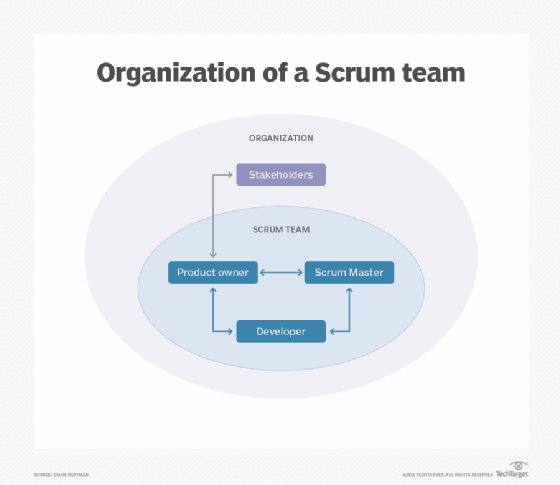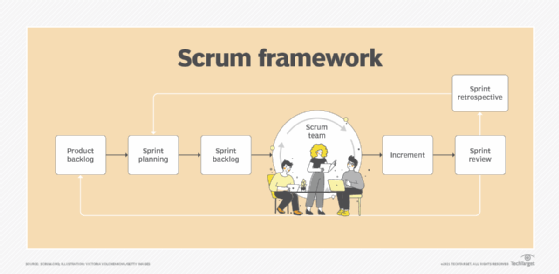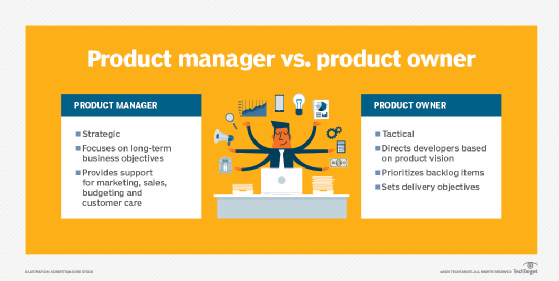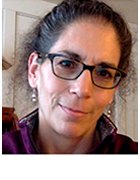
Getty Images
Who should be the product owner in Scrum?
Who should be the Scrum product owner and how does an organization choose the right person for that job? It's not an easy decision, but it's a critical one for all Scrum projects.
The Scrum Guide describes three roles, or accountabilities, that must exist within a Scrum team:
- The developer
- The Scrum Master
- The product owner
We all know who developers are. They're the workers who build the product.
We all know who the Scrum Master is. That's the team member designated to coach and guide the team on Scrum theory and practice.
Yet the identity of the product owner isn't always clear.
Who should be the product owner on a Scrum team? And how does an organization select the right person for the product owner job?
What does a Scrum product owner do?
To answer that question, it's important to understand what a Scrum product owner actually does.
"Ultimately, the accountability of the product owner is to define the product goal, to help the team define the sprint goal and to work with the team to make sure the most valuable things are being delivered," said Dave West, CEO of Scrum.org. He also emphasized that product owners must have an established network with stakeholders and a connection with customers.

A product owner is expected to participate in the Scrum sprints, make decisions when the team needs them and actively participate in Scrum events, including planning, retrospectives and reviews.
Factors to choose a Scrum product owner
Traditionally structured organizations new to Scrum often assign a senior business analyst or a project manager to a Scrum team, and expect that person to take on the accountabilities of the product owner. That's not always the wisest approach.
"Scrum is not about just renaming people in your existing hierarchy," said Michael Lloyd, a certified Scrum Master and Agile trainer at And Digital in Salford, U.K.
For example, a Scrum team's product owner is a questionable choice to also be the project manager because the positions' priorities can be in conflict. "I've never seen making a project manager the product owner work out well," Lloyd said, "although I'm sure it happens."
The product owner must be an equal member in a non-hierarchical Scrum team, and not in a position of power above the other team members, Lloyd said.
Scrum developers negotiate, debate and bargain with the product owner over which backlog items will be developed in a given sprint. Any power imbalance that exists between Scrum developers and the person who accepts accountability as the product owner might limit open and honest discussion about the product backlog.

The top qualification to be a Scrum product owner
Beyond all the other traits a good product owner must possess, the most important is trust. Here's why:
- The Scrum team must trust the product owner to make fair and final decisions.
- Stakeholders must trust the product owner to give that person autonomy over backlog-related decisions.
- All stakeholders must trust the product owner to make decisions that further their best interests.
The product owner must be empowered to make decisions about product development, on the spot, without gaining the agreement of a committee or the consent of an outside authority.
"A great Scrum team has a product owner that makes choices and makes decisions," West said. "If you've got a product owner that isn't trusted by management or the organization, they don't get the freedom to make the right choices. They're always second-guessing."
Time to select the Scrum product owner
Considering all these factors, who should an organization designate as the product owner on a Scrum team?
It's the person whom the organization implicitly trusts to make autonomous decisions pertaining to the product and the product backlog.
"It could be a project manager, it could be a business analyst, it could be a tester, it could be somebody who's a software engineer and it could be an SME," West said. "It doesn't really matter what their traditional title was."

And how should the organization choose the person best suited to be the product owner?
The Agile manifesto trumpets the benefits of self-organized teams. The Scrum Guide asserts that a Scrum team should be self-managing, "meaning they internally decide who does what, when and how."
Ideally, then, the Scrum team itself should identify the individual who could best assume the accountabilities of the product owner.
Scrum teams operate best when the organization allows them to self-manage and self-organize. That includes having a say about who would be the best person to fulfill the accountabilities of the product owner.
"If the organization isn't able or willing to empower the team to self-reflect and choose a product owner themselves, they should at least identify someone who meets that other criteria," Lloyd said.







